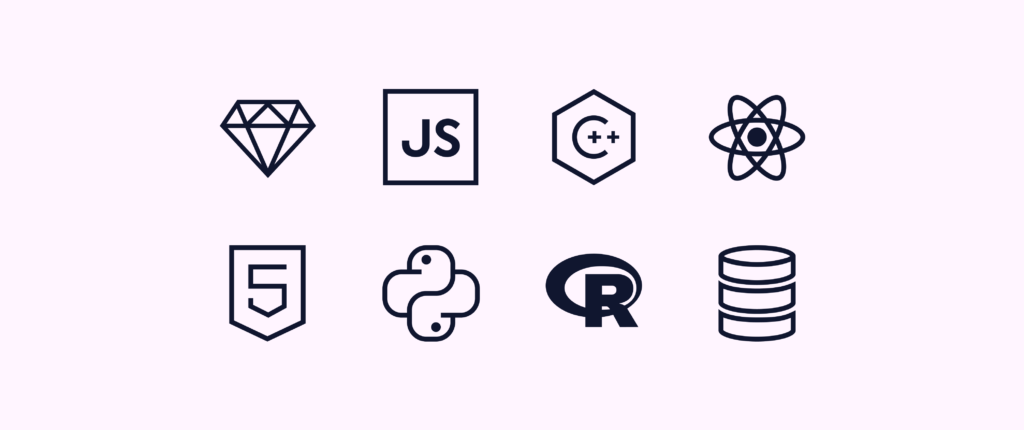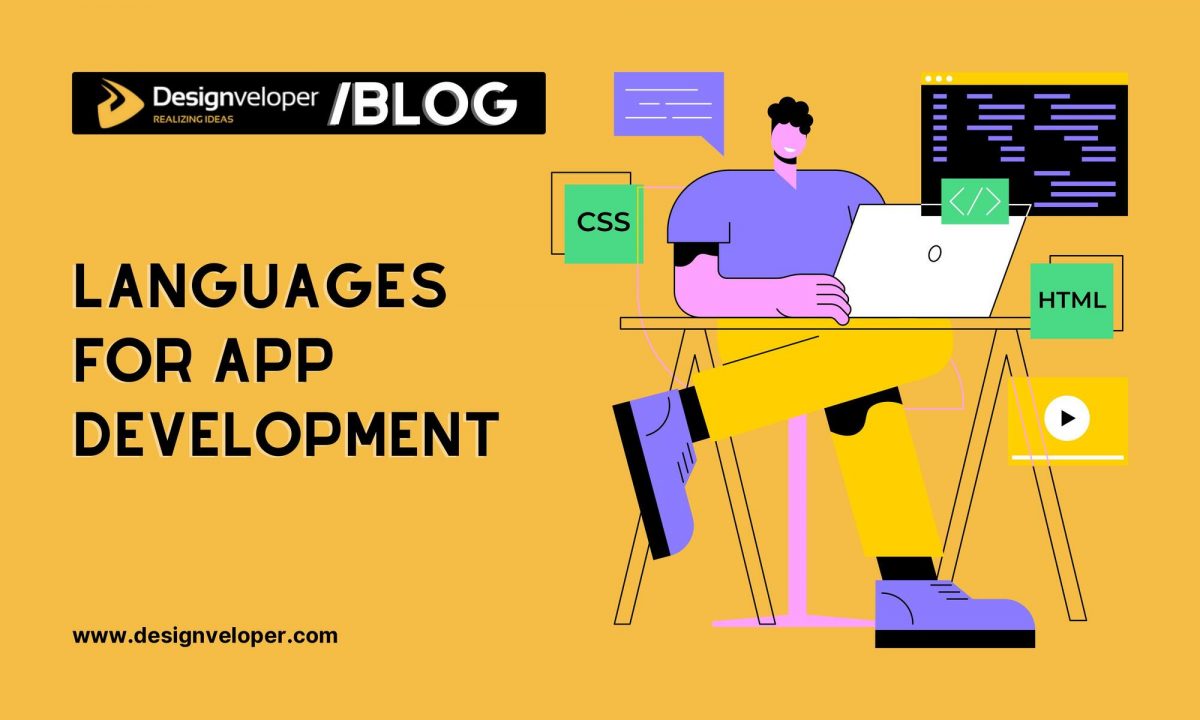Swift is a general-purpose programming language that was made using modern techniques for software design patterns, performance, and safety. Do you want to know more about it? This article will definitely help with it.
Swift has come a long way to become the widely used programming language it is today for making iOS apps. First, let’s learn more about its long history.
What is the Programming Language Swift?
Swift is a powerful programming language that is also easy to learn. It works with iOS, OS X, tvOS, and watchOS and has the best parts of both C and Objective-C. It shows how useful it is by letting us get rid of the limits that C compatibility puts on us.

Made by Apple, it is compatible with the Cocoa and Cocoa Touch frameworks as well as Objective-C codes for Apple products. Swift is meant to be less affected by mistakes in the code than its predecessor, Objective-C. This is often called making Swift “safer”. It is also easier to understand. It is built with the LLVM compiler framework, which is included in Xcode 6 and later versions.
History
Chris Lattner started working on the Swift programming language in July 2010, and many other Apple programmers eventually helped him. Swift took ideas “from Objective-C,Rust, Haskell, Ruby, Python, C#, CLU, and far too many others to list”. On June 2, 2014, the Worldwide Developers Conference (WWDC) app became the first Swift app that anyone could use.
The language hit version 1.0 on September 9, 2014, when Xcode 6.0 for iOS came out as a “Gold Master”. Swift 1.1 and Xcode 6.1 both came out on October 22, 2014, while Swift 1.2 and Xcode 6.3 came out on April 8, 2015. Swift 2.0 was shown off at WWDC 2015, and on September 21, 2015, it was added to the App Store. On December 3, 2015, a Swift 3.0 roadmap was put up on the Swift blog. Before that, an interim version of Swift 2.2 with more syntax and features was released.
Recommended reading: Top 7 Web Development Languages To Use In 2022
Swift has grown a lot since Apple decided to make it an open-source language in 2015. In the first week after the Swift project was announced, more than 60,000 people took a copy of it. As of September 2021, the latest version, Swift 5.5, is still in beta and is available with Xcode 13 beta.
Implementations
Since the source code for the programming language is open to the public, it can be ported to the web. Some web frameworks are already out there, like Kitura, Perfect, and Vapor, which were all made by IBM. Apple has also started a formal “Server APIs” work group, in which Swift developers play a key role.
As part of RemObjects Software’s Elements Compiler, there is a second free implementation of Swift that works with Cocoa, Microsoft’s Common Language Infrastructure (.NET), Java, and the Android platform. This version of Swift is compatible with all of these platforms.
In addition, by putting together the toolchains from LLVM and Macintosh Programmer’s Workshop, one can run a very small part of the Swift language on Mac OS 9.
Top 5 Features of Swift
Swift has become one of the top candidates for the tool that software developers use most. In this section, we’ll talk about some of Swift’s design features that make it an interesting programming language to learn.
1. Readability
Swift is not based on C, therefore it is able to remove the multiple @ symbols that were placed in front of every Objective-C type and object-related keyword. This allows Swift to unify all of the keywords. Swift eschews the traditions of previous languages. As a result, you won’t need to use semicolons to terminate lines or parentheses to enclose conditional expressions within if/else statements anymore. Another significant improvement is that method calls will no longer be nested within each other, which eliminates the bracket hell that previously existed.

Swift calls to methods and functions make use of the comma-separated list of arguments that is an industry standard and are enclosed in parentheses. The end result is a language that is clearer, more expressive. In addition, Swift code is designed to more closely mimic natural English. Because of Swift’s superior readability, it is now much simpler for programmers coming from other languages. They include JavaScript, Java, Python, C#, and C++.
2. Safety
Swift gets rid of whole categories of unsafe code. Variables are always set to their default values before usage. Arrays and integers are checked for overflow, memory is managed automatically, and exclusive access to memory prevents many programming mistakes. Syntax is set up to make it easy to say what you mean. For example, a variable (var) or constant (const) can be defined by a simple three-character keyword ( let ). And Swift uses value types a lot, especially for types like Arrays and Dictionaries that are used a lot. This means that if you copy something of that type, you can be sure it won’t be changed anywhere else.
By default, Swift objects can never be nil. This is another safety measure. In fact, the Swift compiler will give you a compile-time error if you try to make or use a nil object. This makes writing code much cleaner and safer, and it keeps your apps from crashing. But there are times when nil is a valid and correct answer. For these kinds of situations, Swift has a cool feature called “optionals” that can be used. An optional may contain nil, but Swift forces you to handle it safely by using the? syntax to show the compiler that you know how it works and will handle it safely.
3. Speed
Apple says that the Swift language’s search algorithms can finish up to 2.6 times faster than those written in Objective-C. Compared to Python 2/7, it is 8.4 times faster. The framework for Swift’s compiler is called LLVM. It is in charge of turning assembly language into machine code and optimizing that code.
Recommended reading: The 7 Best Languages for App Development in 2022
This means you use less code than you would if you were working in Objective-C, which speeds up the development process. For example, using Swift for both the back end and the front end of an app makes it easy to share and reuse a lot of code. This speeds up the process of making the app and reduces the amount of work that needs to be done to make it.
4. Beginner-Friendly
The Swift language can make it easier for people to get into programming. In fact, it is a programming language for beginners that anyone can use, whether they are still in school or looking for a new job. Apple has made a free set of lessons that teachers can use to teach Swift in the classroom or on their own time. A great place to start is by downloading Swift Playgrounds, an app for the iPad that makes learning to code in Swift more interactive and fun for new programmers.
People who want to learn how to make apps can take free classes that teach them how to use Xcode to make their first apps. Also, Apple Stores all over the world host events called “Today at Apple Coding & Apps” that give people a chance to learn Swift programming in person.
5. Memory Management
Swift uses a method called Automatic Reference Counting (ARC). This method helps add a garbage collector to iOS, which didn’t have one before. In programming languages like Java, C#, and Go, garbage collectors are used to get rid of class instances that are no longer being used. They help cut down on the amount of RAM needed, but they can take up to 20% longer to process.
Before ARC, iOS developers had to manage memory by hand and keep an eye on and change the retention counts of each class on a regular basis. In Swift, the Activity Repository Collector (ARC) can find out which instances are no longer being used and get rid of them for you. It lets you speed up your program without hurting either the memory or the CPU.
What Languages is Swift Similar to?
Swift is a successor to both the C and Objective-C languages. It has things like operators, flow control, and types, which are low-level building blocks. It also has object-oriented features like classes, protocols, and generics. This gives developers who work with Cocoa and Cocoa Touch the power and speed they need.

On the other hand, Swift has more in common with languages like Ruby and Python than with Objective-C. In the programming language Swift, for example, you don’t have to use a semicolon to end a statement like you do in Python. Swift is a language that you would like if you enjoy Ruby and Python.
Rust is another name that is conceptually pretty similar to Swift, and with similar uses. Swift, in general, borrows from a lot of different places, so most people should be able to get a good start on learning it.
How to Learn Swift?
Apple wants as many people as possible to learn its own programming language for reasons that are easy to understand. To help reach this goal, the company offers a variety of learning tools. You can learn to program in Swift with the help of a number of free and easy-to-use tools in just a few short months. The Swift Mentorship Program and the Swift Playground app are two examples of these kinds of tools. This language is also an open-source language, which is helpful for people who are just starting out with it.

For those who already know a lot about computer programming, there are e-books and other official Apple materials, as well as a large number of online courses.
Working with Swift
The easiest way to start building apps with Swift once you know the language is to download the latest version of Xcode, Apple’s integrated development environment (IDE) for macOS. This comes with a full version of Swift as well as all of the runtimes you need to start making apps. It also has all the most important tools, like a code editor, debugger, testing environments, and more. Popular iOS apps like Lyft, Firefox, LinkedIn, Twitter, and WhatsApp… use Swift.
According to data from Glassdoor, the average base salary for a Swift software engineer in the United States is about $87,456 per year. The annual base income can be anywhere from $68,000 to $133,000, depending on a number of factors. As a Swift programmer or developer, your base annual salary may depend on things like how many years of experience you have, where you live, and how good you are. But when you look at Swift programming as a whole, you can see that it is a very lucrative field to get into.
Conclusion
Even though the first version of Swift didn’t come out until 2014, the popularity of the programming language grew quickly. There’s no doubt that the number of people using Swift to make apps is growing. Swift will continue to have a bright future because it is easy to use, takes less time to code, improves performance, manages memory automatically, and with support by Apple and IBM.
If you are the Chief Technology Officer of a company and you want to use Swift for development, you will need the help of experienced app developers. Designveloper can be one of them; we can give you both great consulting services and assistance from a team of experienced software engineers. Also, our price packages are attractive and can help you plan your financial strategy better.





















